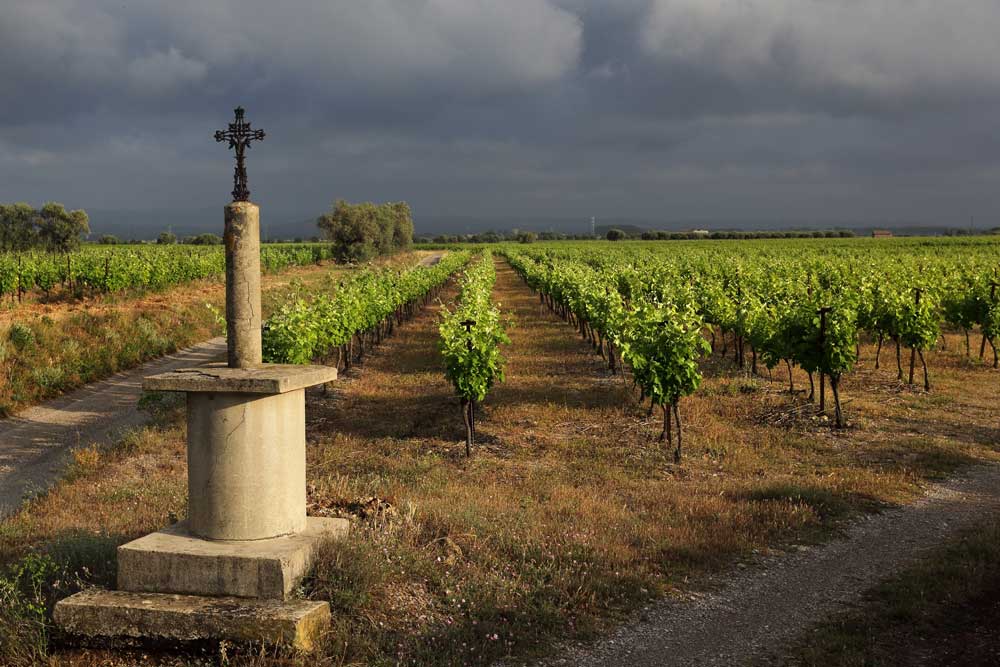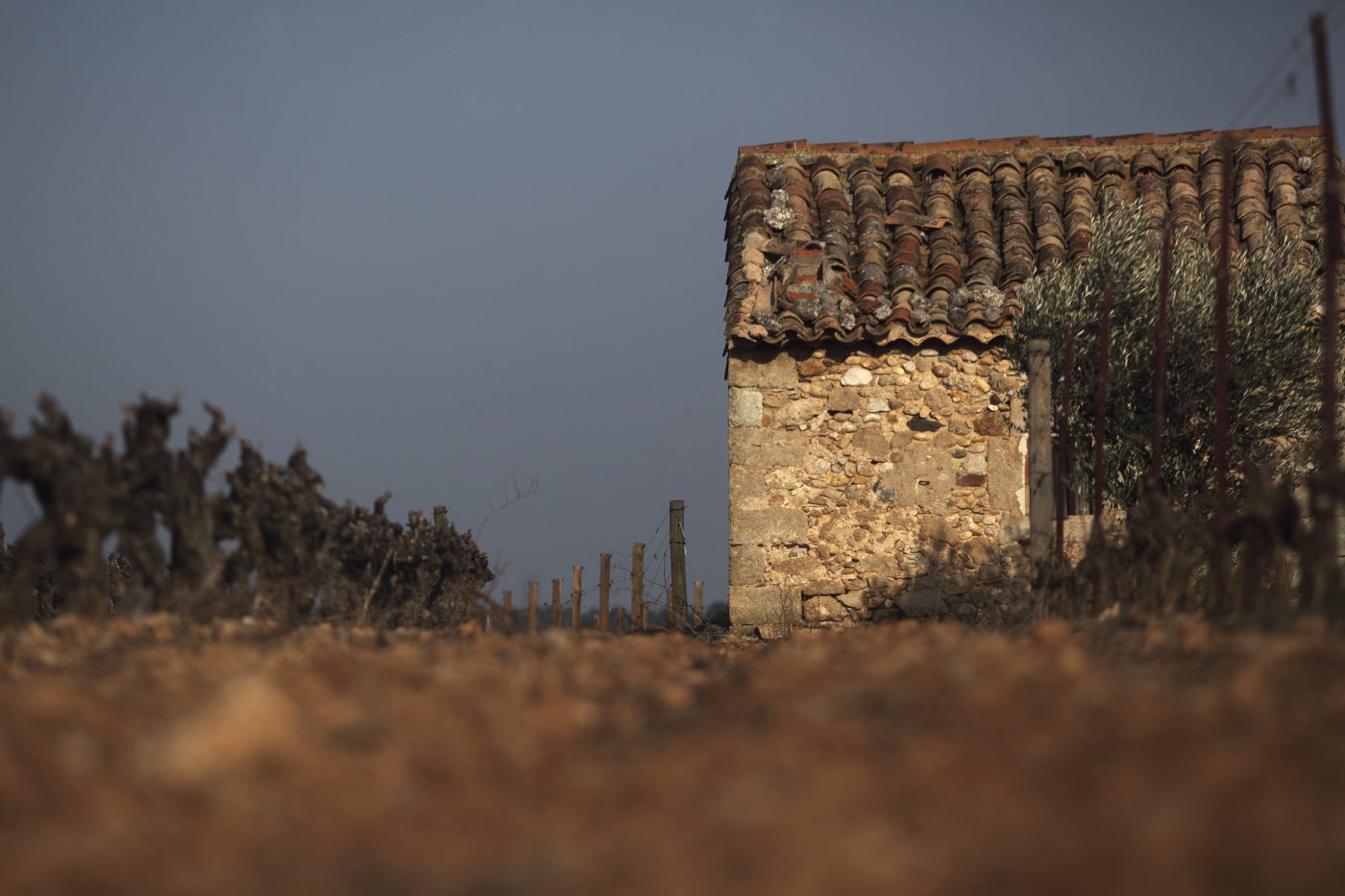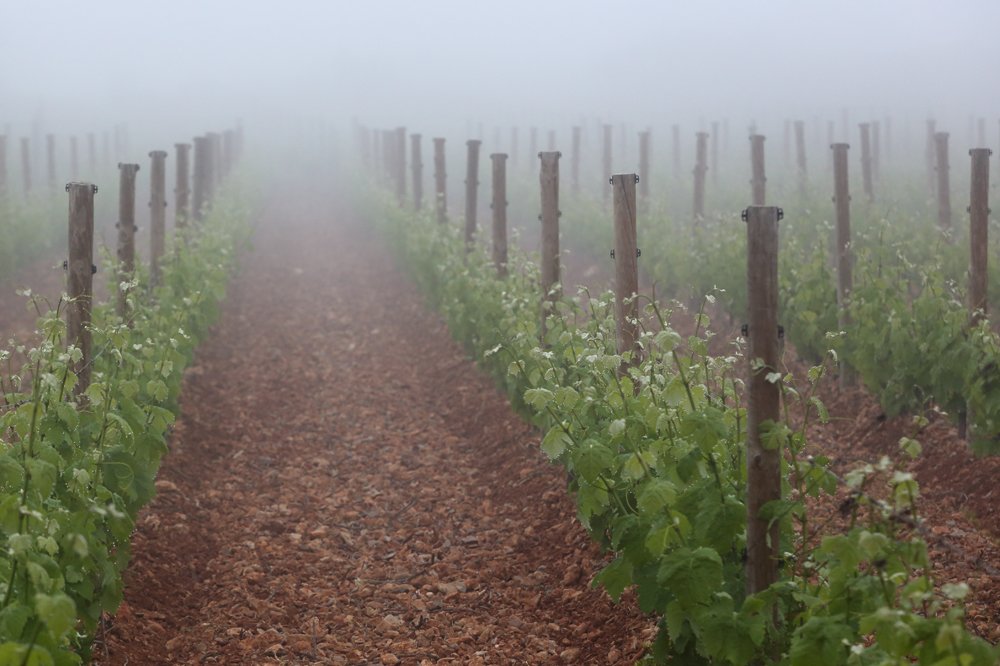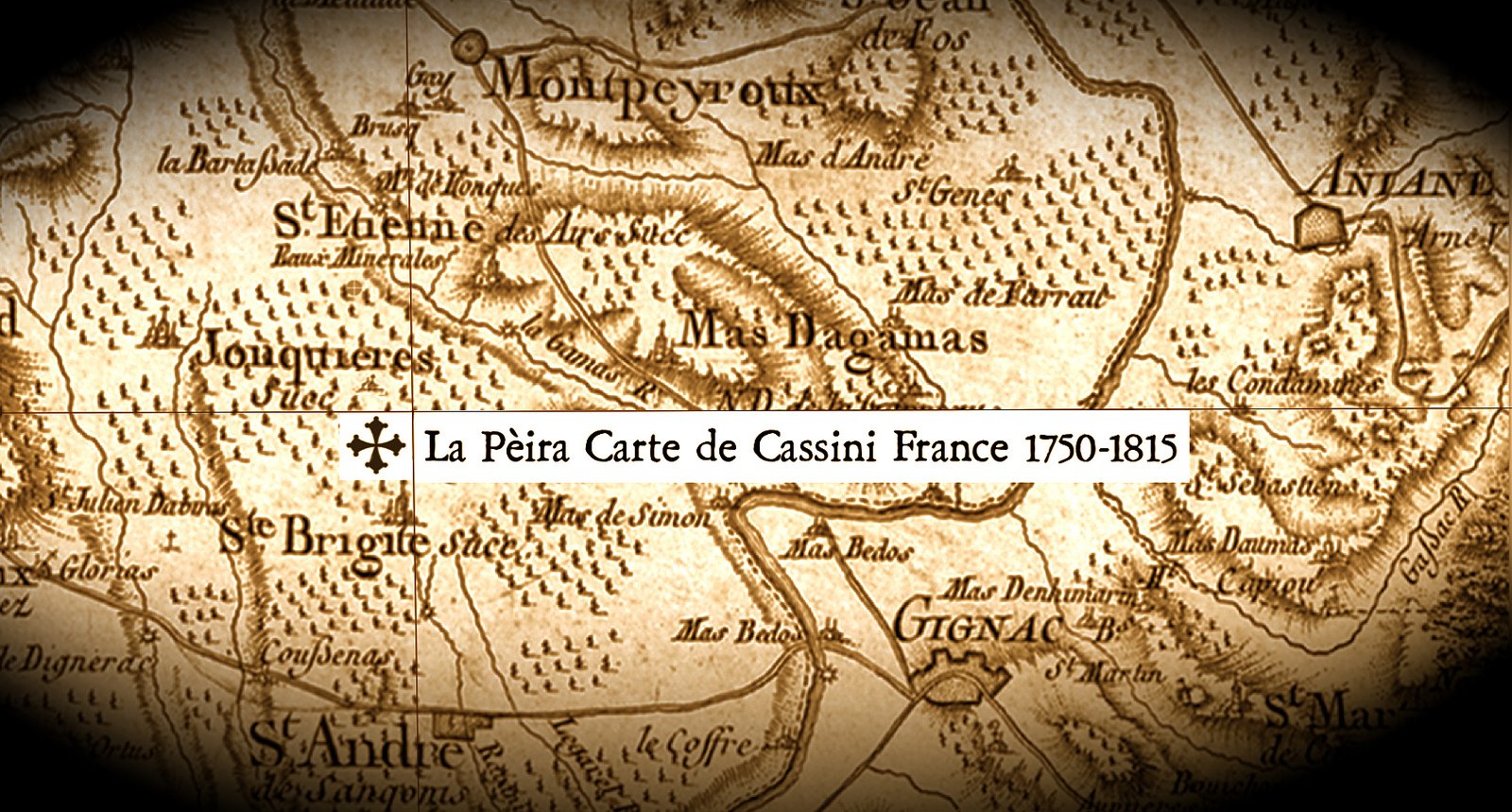Estate
Owners: Karine Ahton and Robert Dougan
Classification: AOC Terrasses du Larzac
Sector: Sainte-Brigitte (Jonquieres/Saint-André de Sangonis)
Vineyard area: 15.3 hectares
Vineyards/Lieux-dits: Bois de Pauliau, Bellefeuille (Belle Fiolle), Les Pointes
Presentation of the estate: View PDF (link)
Soil: Gravelly Quarternary Alluvial deposits (Pliocene Age) These deposits were derived principally from the mountains of Late Jurassic (about 150 million years old) limestone to the north. The gravels along with sand, silt, and clay, were laid down in stream channels in what are known as alluvial fans (cones).
Average annual production: 500 cases of the grand vin, La Pèira | 700 cases of the second vin, Las Flors de la Pèira. Vineyards planted with: Syrah, Grenache, Mourvedre, Cinsault, Carignan, Viogner, Roussanne, Marsanne, & Clairette blanche.
Other wines: Obriers de la Pèira (1800 cases), Deusyls Blanc (300 cases), La Pèira Blanc (80 cases), Matissat (110 cases)
France’s Earliest Viticultural Region

“Roman ruins found in southern France have been declared remnants
of the country’s earliest known winery”
Decanter Magazine
While the team’s work at La Pèira began as recently as 2004, the vineyards sit in France’s earliest viticultural region.
As Hugh Johnson states of this area in his The Story of Wine: “These are the first extensive vineyards in France we can be certain about”.
The estate is located in the commune of Saint André de Sangonis, which has been designated AOC for over half a century, as the most northerly of the two zones of the Clairette du Languedoc AOC (1948).
Nearby La Pèira, and still in the Clairette AOC, France’s earliest known winery (AD 10) was discovered in 2007 (link: Decanter France’s earliest winery found 2 Jul 2007).
Indeed, the first mention of French wine in literature as being of significant merit is found in Pliny’s Natural History (AD 77–79) in which the white wines of Baeterrae [Beziers] nearby are cited as worthy of note (alongside the resinous reds of Vienne): “When ye are passed once into Fraunce or Gaule, the wine of Beterræ is in chiefe request.”
[CHAP. VI. Pliny’s Natural History: Of kindly wines made of the best Grapes. Trans. PHILEMON HOLLAND 1601]
“Some of the greatest vineyard land in the south of France”

“Some of the greatest vineyard land in the south of France”
Andrew Jefford Financial Times
By contrast, the vineyard’s designation for the production of red wines (Terrasses du Larzac) was decreed as recently as 2005 (coincidentally the inaugural vintage of the current team).
In 2009, Andrew Jefford dedicated an article in the Financial Times to looking at the Terrasses du Larzac (and what he called “the astonishing wines of La Pèira”), writing that the enclave contained, “some of the greatest vineyard land in the south of France.” (Link)
Subsequently, French wine critics Michel Bettane and Thierry Desseauve awarded the Terrasses du Larzac French Appellation of the Year in 2011, with the citation:
“This sector very much deserves a status apart. A terroir. A real one.”
“The deep alluvial fan that is the basis for this site is only barely tilted, as it might be in St. Helena or Rutherford, St.-Estephe or Pomerol”

“Many observers in the Languedoc-Roussillon believe the vineyards/terroirs located in the sector…in and around the village of St.-Andre de Sangonis produce some of the finest wines of the region.”
Robert Parker Wine Advocate 1998
The soils are deep gravelly quaternary alluvium – set down here over the same period, and in the same way, as those in the Médoc, Graves, Saint Emilion, or Pomerol – but just on a different side of the Massif Central. Instead of the Gironde you have the Hérault river…
As Andrew Jefford writing for Decanter magazine on his visit to La Pèira observes:
“Something hereabouts, in the benchlands of Terrasses du Larzac, works very well indeed. My last visit came after two days of huge rain, but there wasn’t a drop of standing water to be seen: the deep glacial rubble had swallowed, and digested, the lot. It’s stony, but not austere; it’s bright but ventilated. For the Languedoc, it feels almost Médoc-like.” (Link)
While the Quaternary Alluvium deposited in the Medoc there sometimes forms terrace mounds, here it is expressed as alluvial fans or cônes (another notable example of this in the world of wine is the Rutherford bench). As David Schildknecht relates:
“The deep alluvial fan that is the basis for this site is only barely tilted, as it might be in St. Helena or Rutherford, St.-Estephe or Pomerol … and these comparisons will not seem inapt once you experience the quality of La Peira’s wines.”
The Terrasses du Larzac, in the inland hills of the northern Hérault, overlaps in two villages with that of Roquefort – France’s oldest and the world’s first appellation (1925).
Here, the in the villages of Pégairolles-de-l’Escalette and Octon, the grazing of Lacaune, Manech, and Basco-Béarnaise ewes for the production of Roquefort cheese occurs alongside the growing of Grenache, Syrah, and Mouvedre for Terrasses du Larzac wine. After that the culture of the olive and the vine peter out and are replaced with the grazing of sheep and cattle, the making of cheese, and – eventually – forests of Oak, Chestnut and Pine.

